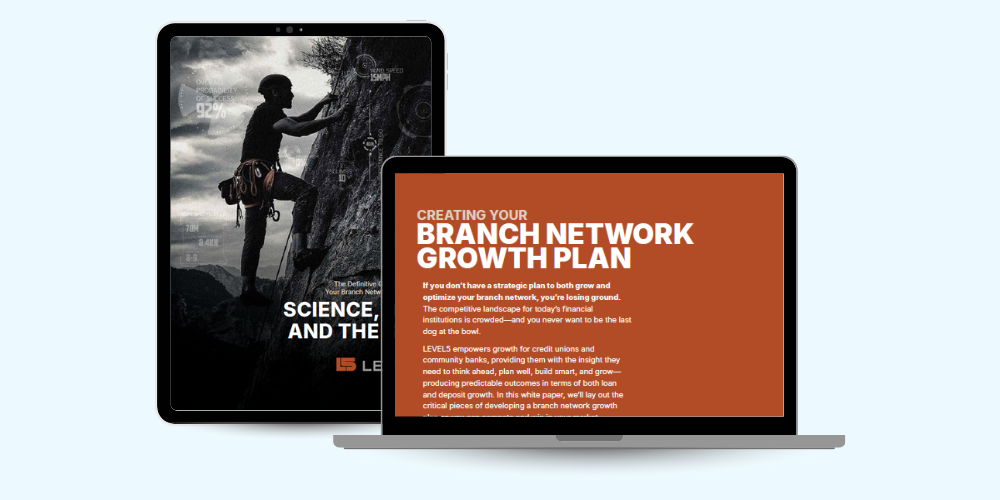I had the honor of hosting hundreds of Financial Health Superstars as the emcee of Financial Health Network’s EMERGE conference in Los Angeles a couple of weeks ago, including many credit union leaders. This in-person event was a powerful testament to the value of coming together around a shared purpose of improving financial health for all. In addition to credit unions, megabanks, fintech, insurance providers, and government entities were represented. It was a great event and a reminder that, yes, we can ALL play nicely in the sandbox when we’re focused on driving better consumer outcomes.
My opening remarks centered on a critical theme: we might not know our members as well as we think we know our members. Improving outcomes requires credit unions to get under the surface of members and focus on our shared values as humans. I think credit unions are in a unique position to harness the power of their existing branch network to blend the mental-physical-financial health needs of the communities served.
Perception versus reality
The last few years have been challenging for all of us and on top of the stress of the pandemic isolation and lack of consistent childcare, I personally have faced a massive medical shock. As I walked through what this journey has meant to my family and me from the EMERGE mainstage, audience members - including credit unions - saw their target member and customer in a different light. Instead of a typical millennial in his prime working years, they recognized how recent experiences impact my family’s overall health; mental, physical, and financial.
Throughout the next two days, my conversations with attendees helped me appreciate that we - people - are far more similar than dissimilar. It’s abundantly clear that we all value aspects of overall well-being, and these aspects are often dealt with alone. The more we ‘show’ others what we are managing behind our deposit balances, the more we can meaningfully support one another.
What does this have to do with credit unions and financial well-being?
It’s all connected
Gigi Hyland, Executive Director at NCUF, authored an important and relevant whitepaper on the link between health and financial well-being. Within this exceptional piece, she writes, “...health influences our ability to learn, work, and become financially secure. Health is also tied to larger societal issues - such as chronic income poverty - which in turn, affect the health of populations and communities.”
Credit unions are in the business of improving the financial health of their members and communities, but that often means focusing on products, price, and promotion. And they’re relatively good at that! But I think we’re missing a key element of the marketing mix: place.
Let me tell you from experience addressing my mental, physical, and financial health needs have been exhausting! Between researching providers in the area, driving to multiple locations in traffic, and spending hours on the phone, I want a simpler method.
The branch of the future
Let’s clarify one thing: I believe branches have an important role in communities across the country. But the antiquated model of bank branches (money in, money out) may have outlived its usefulness with the emergence of digital platforms and expanded reach of broadband internet access. We see hundreds of branches close their doors permanently each year, in large part because executives look at the value of individual cost centers. This seems flawed, and now might be the perfect time to shift our thinking - to think bigger.
Clearly, the mental, physical, and financial health needs of people are all connected, but in order to improve these aspects of life, people are piecemealing their ideal solution based on their physical location and digital competencies. There must be a better solution.
The credit union branch of the future
We all value and deal with aspects related to our mental, physical, and financial health. As people become more comfortable sharing information otherwise swept under the rug, credit unions can improve their relevance by addressing the holistic needs of community members by becoming more than financial institutions.
Now, imagine a credit union branch model that brings it all together under one roof, saving people time, money, and frustration. A wellness hub that helps people navigate the complexities of overall health to garner significant trust in the community and deeper relationships with members. Filene, Financial Health Network, and TransUnion recently presented a version of this idea to over 100 credit union leaders, who remained engaged with the concept.
Is it crazy? Perhaps. There are plenty of reasons not to do something. However, my experience at EMERGE this year reinforced the need for financial institutions to think bigger, and credit unions are in a prime position to provide a unique value to communities with a unified vision of improving overall health. With the right leadership and foresight, this could be the branch of the future.







